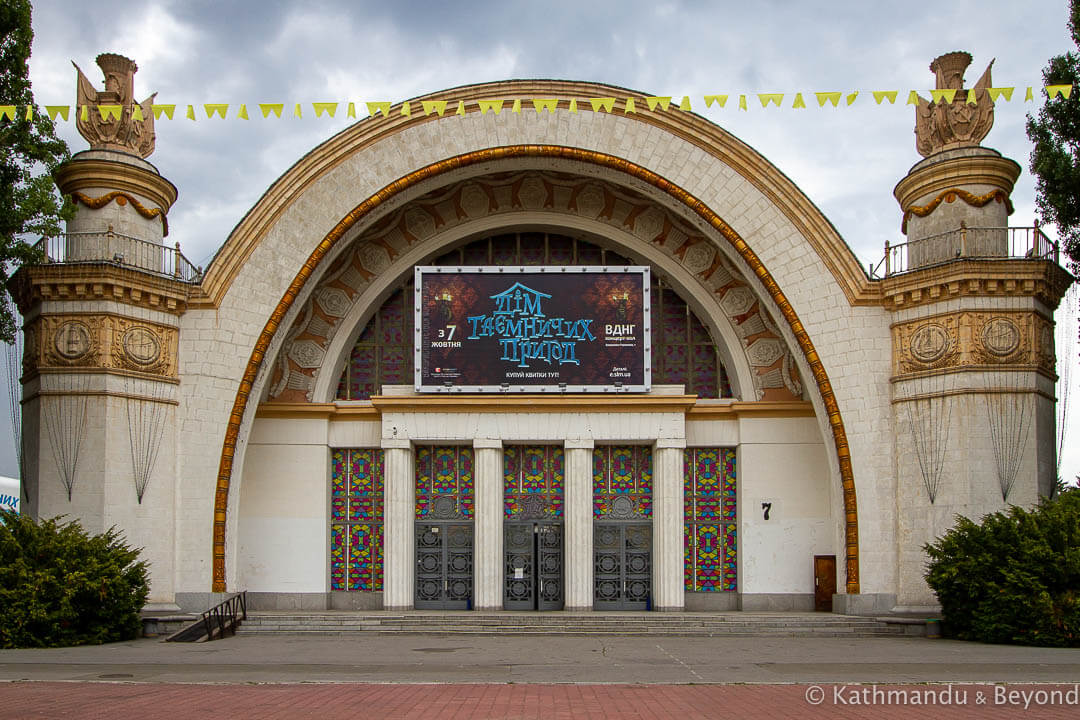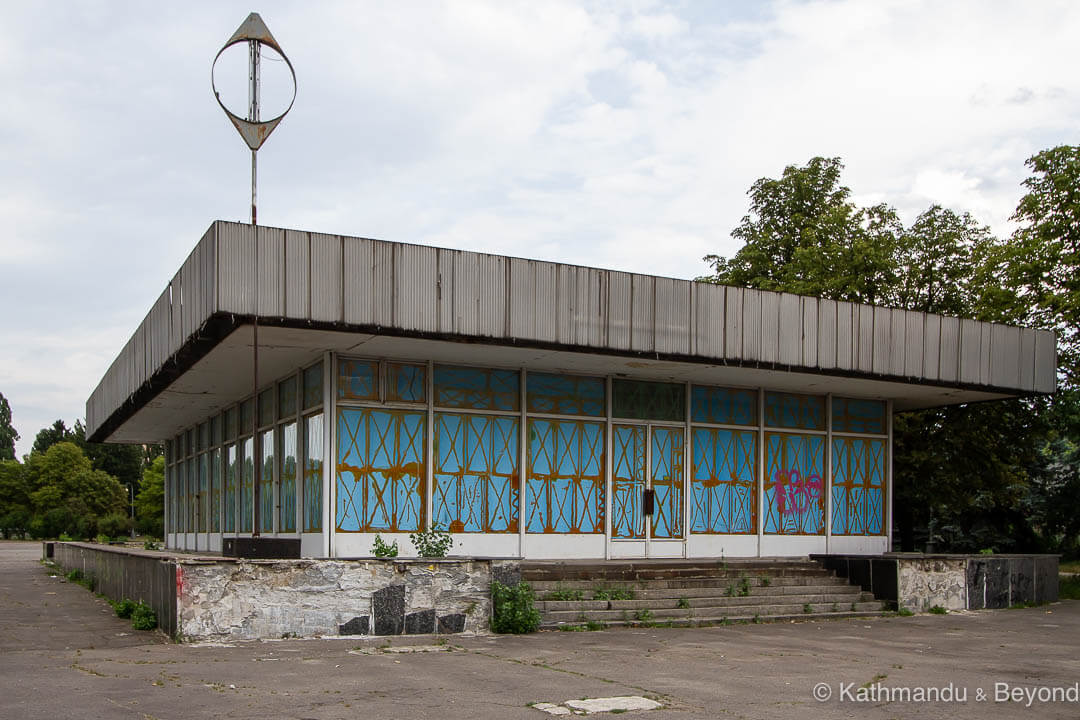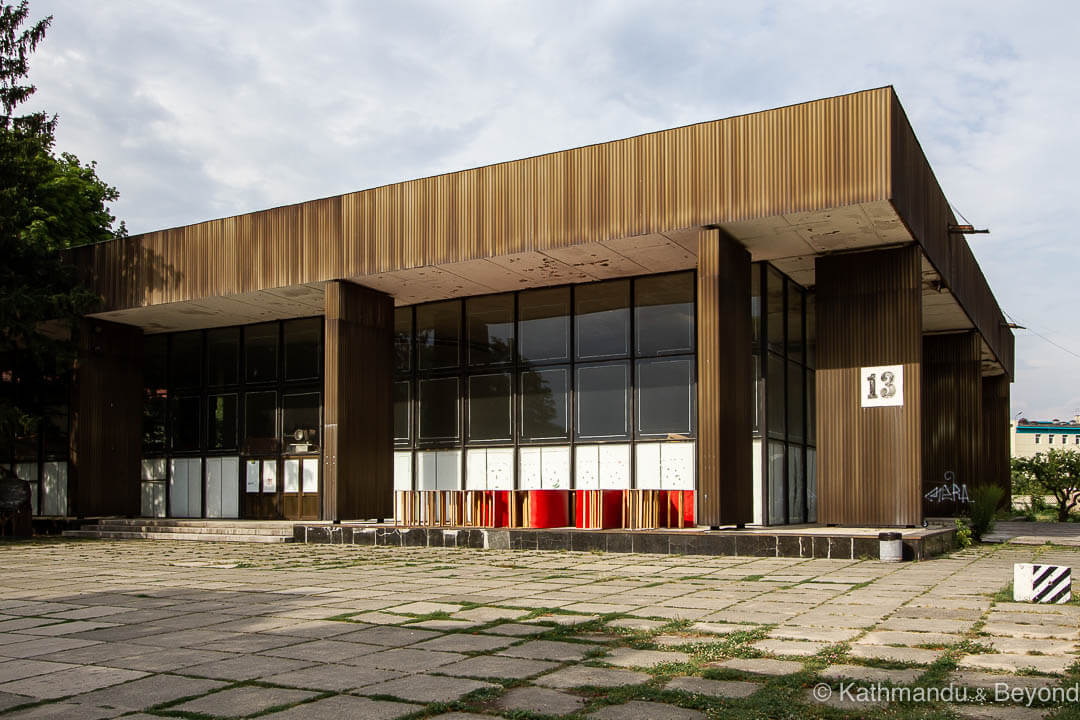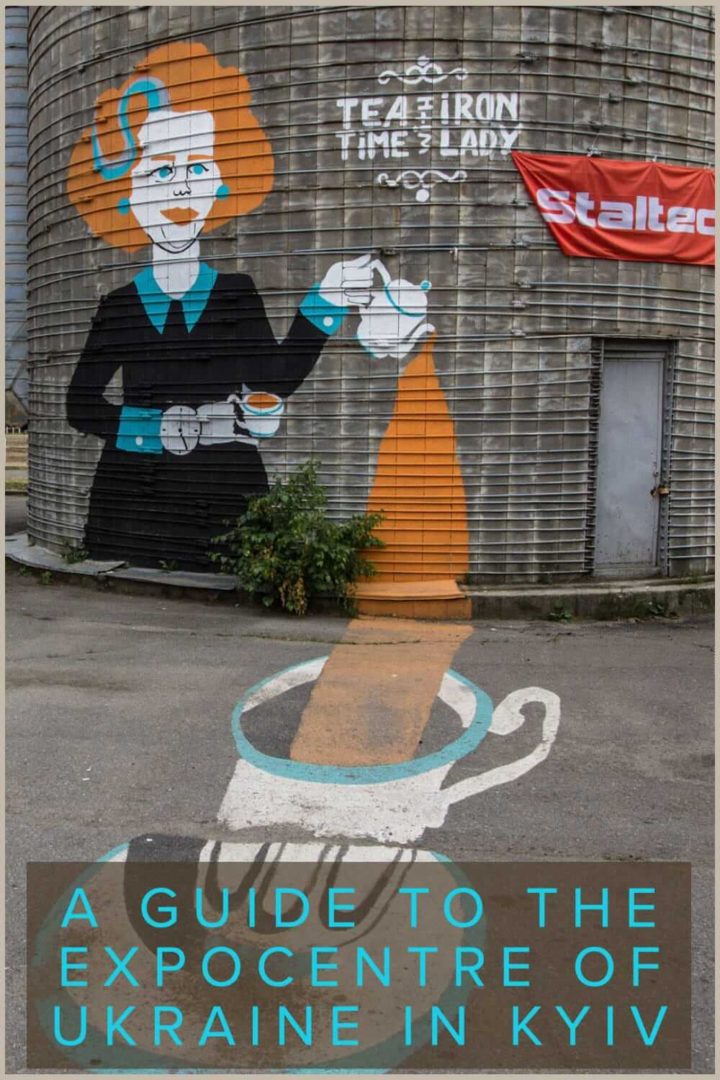A short guide to the Expocenter of Ukraine in Kyiv
The National Complex Expocenter of Ukraine (VDNG), to give the place its full title, is an exhibition and trade fair complex located about 10kms south of the centre of Kyiv. It is the only state institution of its kind in Ukraine and is still used to host events. There are no longer any permanent exhibitions (see below) but around 100 temporary national and international exhibitions are put on each year.
Unless you are specifically interested in trade fairs, there are two main alternative reasons to visit the Expocenter in Kyiv. Geographically, the territory of the Expocenter is located within the Holosiivskyi Forest, a protected nature park in the southern part of the city that covers an area of 45 km2. The exhibition centre itself is spread out over almost 3 km2, more than half of which is given over to gardens and forest park. With opportunities for horsing riding (there is an equestrian centre within the grounds), as well as play areas for children, a small waterpark, walking paths, bikes for rent and several cafes and restaurants to choose from, recreation is, therefore, the primary reason why most people visit the Expocenter. It is a nice escape from the city and plenty of Kievites come here to do exactly that.
The other alternative reason to visit the Ukrainian Expocenter is architecture and, although we are not averse to a bit of meandering in the great outdoors, it was this that sparked our interest in wanting to come here.

The complex was originally established to showcase the economic achievements of the Ukrainian Soviet Socialist Republic (Ukrainian SSR). Plans to create the exhibition centre date back to the late 1940s and were initiated by Nikita Khrushchev who was serving as the First Secretary of the Communist Party of Ukraine at the time. Khrushchev reported directly to Joseph Stalin and would go on to succeed him as First Secretary of the Communist Party of the Soviet Union after his death in 1953. Khrushchev would also go on to publicly denounce Stalin and the cult of his personality in a speech he gave in 1956 but, while the Soviet leader was still alive, Khrushchev was keen to impress and proposed topping one of the central pavilions (No.10) with a 50-metre monument of Stalin that would loom over the complex and be the tallest statue of the dictator in Ukraine. The monument was never created. Instead, a female holding a sheaf of wheat above her head dominates the top of the building, a decision that was presumably related to Khrushchev’s 1956 speech?



In 1949, the go-ahead for the Expocenter project was given by the Council of Ministers of the USSR and a team of architects was tasked with creating a blueprint that would see several architecturally impressive pavilions and other buildings for cultural use etc., interspersed among a number of outdoor recreational areas.
Work commenced in 1952 and the exhibition centre was opened on 6th July 1958 by Nikolai Podgorny, the then First Secretary of the Communist Party of Ukraine. It was officially named the Exhibition of Advanced Achievements of the National Economy of the USSR, which was later changed to the Exhibition of Achievements of the National Economy of Ukrainian SSR. It was renamed the National Complex Expocenter of Ukraine after the country became independent of the Soviet Union in 1991.
There are 180 buildings within the borders of the Expocenter. Without question, the most impressive ones are those that were constructed between 1952 and 1958. These are the original structures and they are all positioned around the territory’s central square. Furthermore, they are all in the design of Stalinist architecture, the flamboyant style of architecture that was championed by the Soviet leader during his time in power and used to convey the propagandist image of the USSR as a world-leading superpower.
The grandest of the Expocenter’s buildings is the main pavilion, or Pavilion No.1. This monumental structure dominates the exhibition centre and is the first thing to come into view when walking from the main entrance to the heart of the complex. The building is the work of Boris Zhezherin (1912-2006), a Kyiv-born Soviet architect who was responsible for other works in Ukraine including Zhytomyr Ukrainian Music and Drama Theatre and the reconstruction of the National Opera House in Kyiv in the 1980s.

Moving away from the main pavilion, there are several more glorious buildings that show elements of a number of ancient architectural styles including Corinthian, neoclassicism, Romanesque and Egyptian. After the Expocenter opened in 1958, all of these buildings functioned as locations for permanent exhibitions, of which there were three categories; Industry, Construction & Transport, Agriculture, and Science & Culture. Auxiliary buildings such as restaurants, a post office and even a veterinary hospital were interspersed among them.
Not all of the buildings from the original blueprint have survived to the present day but those that have are protected as architectural monuments of national importance by the Government and the Ministry of Culture and Arts of Ukraine.
Other buildings of note in the vicinity of the main pavilion include Pavilion No.3 (Metallurgy), Pavilion No.4 (Agricultural Science and Agriculture), Pavilion No.10 (Grain and Oilseeds), which is where the large statue of Stalin was going to be placed, and the unmistakably Egyptian-inspired Pavillon No.7 (Mechanical Engineering and Instrumentation).



That’s not it, though. Away from the main drag, there are more interesting structures worth searching out. Some are in the style of Stalinist architecture, such as Pavilion No.17 (Construction) and Pavilion No.23 (Science), but there are also some pavilions and other buildings that were added after the first flurry of construction in the 1950s. Most of the other buildings in the grounds of the Expocenter date from the 1960s and ‘70s and are, what would later be coined, examples of Soviet modernism, the more functional and less ostentatious form of architecture that superseded Stalinist architecture. Unlike the latter, generally, Soviet modernist buildings in Ukraine are not afforded any sort of heritage protection status and this is evident at Kyiv’s Expocenter. From what I understand, some of the later-designed buildings are still occasionally used as exhibition pavilions but they are certainly not as well maintained as the majestic structures on the central square. Still, it is worth wandering away from the main thoroughfare to see some of these structures if you are interested in this style of architecture. Those of note include Pavilion No.13 (Coal Industry), Pavilion No.19 (Consumer Goods) and Pavilion No.11 (Wealth of the Sea), although this last one has been covered in advertising banners which distract somewhat from the building itself. Sadly, Pavilion No.19 was demolished in February 2022.




Another thing we stumbled across while strolling around the grounds was a piece of street art on the side of a water tank that was called ‘Tea Time with the Iron Lady’.
In terms of space, the Expocenter in Kyiv is one of the largest exhibition centres in the world. It was a big deal when it opened in the late 1950s and was sometimes used during the Soviet era to showcase the industrial and scientific achievements of the USSR to visiting outsiders. One such dignitary to visit the place was Margaret Thatcher, who was the British prime minister from 1979 to 1990. Margaret Thatcher was first (mockingly) referred to as the ‘Iron Lady’ by the Soviet military newspaper, Red Star a few days after a speech she made on 19th January 1976 about Britain’s foreign policy position in regards to the Cold War and the Soviet Union. In another address at the end of that month, she acknowledged that “Yes I am an iron lady, after all it wasn’t a bad thing to be an iron duke.” (*) and the name stuck from then on.
(*) A reference to the Duke of Wellington (1769-1852), who was known as the Iron Duke.

She attended the “British days in the Soviet Union” exhibition at the Expocenter in Kyiv in June 1990 as part of a 3-day state visit to the USSR. Relations between the two powers had improved dramatically by then and the historic tour, which took place from 8th-10th June, saw her spend the first day in Moscow for talks with Mikhail Gorbachev, the second in Kyiv and the third in the Armenian city of Leninakan (now Gyumri) where she opened a primary school financed and built by the British as part of the aid relief following the destructive 1988 Armenian earthquake.
How to get to the Expocenter of Ukraine on public transport
Getting to the Expocenter is easy. Take Metro line 2 (blue) to Vystavkovyi Tsentr station. Come out and cross over the road. You can’t miss it but just in case, the coordinates are 50°22’43.4″N 30°28’43.2”E
Additional information
It is free to enter the grounds of the Expocenter of Ukraine unless there is an exhibition taking place and in which case an entrance fee is applicable. If the sun is shining, the afternoon is the best time to visit if you want to see the most impressive buildings in the best light. Allow between 2-3 hours if you want to explore the place fully and longer if you want to head into any of the surrounding Holosiivskyi Forest.
Is the Expocenter of Ukraine worth visiting?
Even if you aren’t especially interested in the architecture associated with Kyiv’s Expocenter, it is still worth visiting if you are looking for a pleasant escape from the centre of the city.
READ MORE POSTS FEATURING UKRAINE
DID YOU ENJOY THIS POST ABOUT THE EXPOCENTER OF UKRAINE? WHY NOT PIN IT…




Very interesting!
Thank you for sharing alternative things to see!
I love the less known about things!
I’m glad you enjoyed the post. You have reminded me that, sadly, Pavilion No.19 was demolished in February 2022 and that I need to update the post. It was a wonderful example of Soviet Modernist architecture.